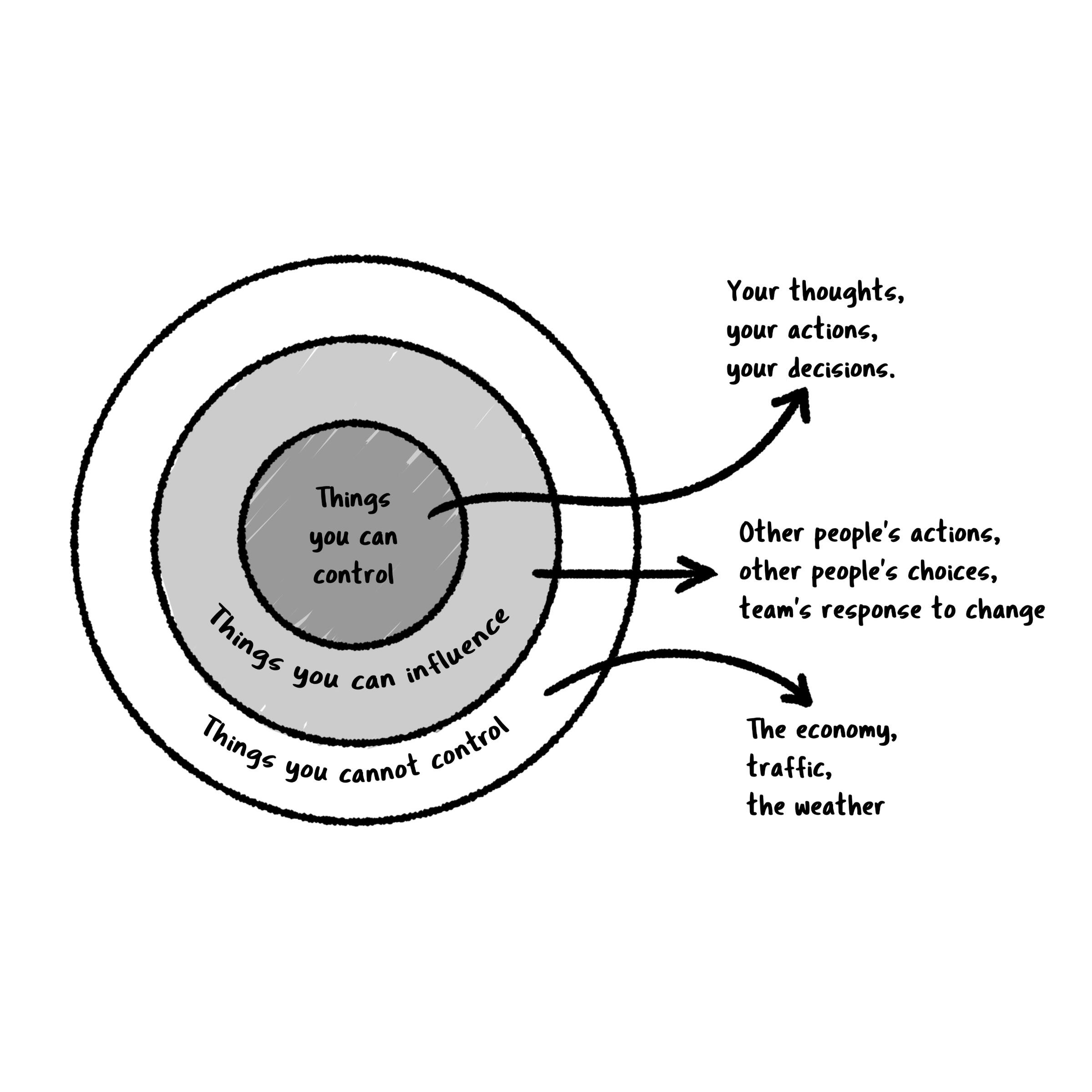
What Does It Mean to Control Your Thoughts?
Controlling your thoughts doesn't mean suppressing emotions or denying reality. Instead, it means consciously directing your attention and energy toward areas where you have actual influence. This framework divides all of life into three categories:
- Things you can control: Your actions, responses, effort, and choices
- Things you can influence: Outcomes that your actions affect but don't determine
- Things you cannot control: Other people, past events, forces of nature, and most future outcomes
Mental freedom comes from investing your energy appropriately across these categories.
The History and Origin
This principle traces back over 2,000 years to Stoic philosophy, particularly the teachings of Epictetus, who distinguished between what is "up to us" and what is "not up to us." The Serenity Prayer, popularized in the 20th century, captures this wisdom: "Grant me the serenity to accept the things I cannot change, courage to change the things I can, and wisdom to know the difference." Modern cognitive behavioral therapy (CBT) has validated this ancient wisdom, showing that focusing on controllables is key to managing anxiety and depression.
How to Control Your Thoughts: Step by Step
Step 1: Awareness - Catch Yourself
Notice when you're mentally spinning on uncontrollables. Common signs:
- Repetitive worry about the same issue
- Feeling frustrated or powerless
- "What if" thinking about unlikely scenarios
- Replaying past events wishing they were different
Step 2: Categorize - The Control Mapping Exercise
When facing any situation, ask:
- What aspects can I directly control?
- What can I influence but not control?
- What is completely outside my control?
Write these down in three columns to visualize clearly.
Step 3: Release the Uncontrollables
For items in the "cannot control" column:
- Acknowledge them without judgment
- Practice the phrase: "This is outside my control"
- Use breathing exercises to release physical tension
- Redirect attention to your controllables
Step 4: Focus on Your Circle of Control
Direct your energy toward what you can actually do:
- Your effort and preparation
- Your response to situations
- Your attitude and perspective
- Your choices and decisions
- Your words and actions
Step 5: Expand Your Influence Wisely
For things you can influence:
- Take appropriate action without attachment to outcomes
- Do your best, then let go
- Recognize that influence isn't control
Step 6: Build Mental Habits
Create triggers to redirect your thoughts:
- Set hourly reminders to check where your attention is
- Use a physical gesture (like touching your wrist) as a reset cue
- Keep a visible reminder of what you can control
Step 7: Practice Daily Reflection
End each day by reviewing:
- Where did I waste energy on uncontrollables?
- When did I successfully refocus on controllables?
- What can I do better tomorrow?
Practical Examples
Example 1: Job Interview Anxiety
Cannot Control:
- Whether you get the job
- Who else is interviewing
- The interviewer's mood
- Company's internal politics
Can Influence:
- Your chances through preparation
- First impression through presentation
Can Control:
- Your preparation level
- Your arrival time
- Your answers to questions
- Your follow-up actions
Focus: Prepare thoroughly, practice answers, dress professionally, arrive early, send thank-you note.
Example 2: Relationship Conflict
Cannot Control:
- Your partner's feelings
- Their past experiences
- How they interpret your words
- Whether they change
Can Influence:
- The relationship dynamic
- Likelihood of resolution
Can Control:
- Your communication style
- Your listening effort
- Your emotional regulation
- Your boundaries
Focus: Speak calmly, listen actively, express needs clearly, take breaks when heated.
Example 3: Business Downturn
Cannot Control:
- Economic conditions
- Competitor actions
- Customer sentiment
- Past decisions
Can Influence:
- Customer retention
- Market perception
Can Control:
- Your innovation efforts
- Cost management
- Team motivation
- Strategic pivots
Focus: Cut unnecessary costs, double down on customer service, explore new opportunities, support team morale.
Benefits and Life Improvements
Dramatic Stress Reduction
When you stop fighting uncontrollable circumstances, stress plummets. Energy previously wasted on worry becomes available for action.
Increased Effectiveness
Focusing on controllables means all your effort goes toward areas where it actually makes a difference. Your impact multiplies.
Emotional Freedom
Releasing attachment to uncontrollable outcomes liberates you from the emotional roller coaster of external circumstances.
Better Relationships
When you stop trying to control others and focus on controlling yourself, relationships improve dramatically. People feel respected rather than manipulated.
Enhanced Decision-Making
Clear thinking emerges when you're not clouded by worry about uncontrollables. Decisions become easier and more effective.
Greater Resilience
Life's inevitable setbacks lose their power to devastate when you've trained yourself to immediately refocus on what you can control.
Inner Peace
The constant mental chatter about things outside your control quiets. In its place comes a calm confidence in your ability to handle whatever comes.
Accelerated Growth
Energy redirected from worry to action creates rapid personal development. You become someone who responds rather than reacts.
Master Your Mental Domain
The ability to control your thoughts by focusing on what you can control is perhaps the most powerful skill you can develop. It's the difference between being a victim of circumstances and being the author of your response to them. This isn't about becoming passive or indifferent—it's about becoming strategically powerful by investing your finite mental and emotional resources where they count.
Start with the next worry that arises. Ask yourself: "Is this within my control?" If yes, take action. If no, practice letting go. Each time you successfully redirect from an uncontrollable to a controllable, you strengthen this mental muscle. Over time, what begins as conscious effort becomes automatic wisdom. You'll find yourself naturally focusing where your power lies, wasting less energy on what you cannot change, and creating more of what you want through focused action on what you can. This is the path to both achievement and peace—not through controlling more, but through controlling better.